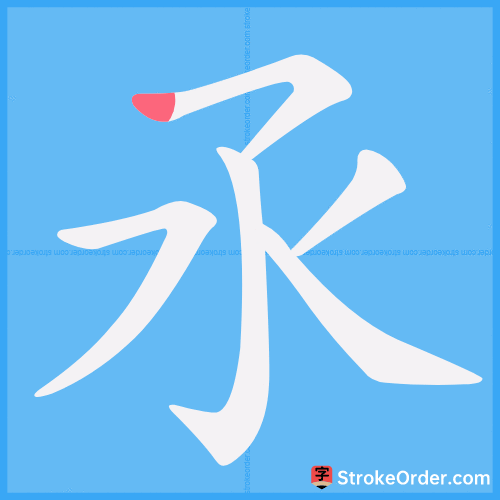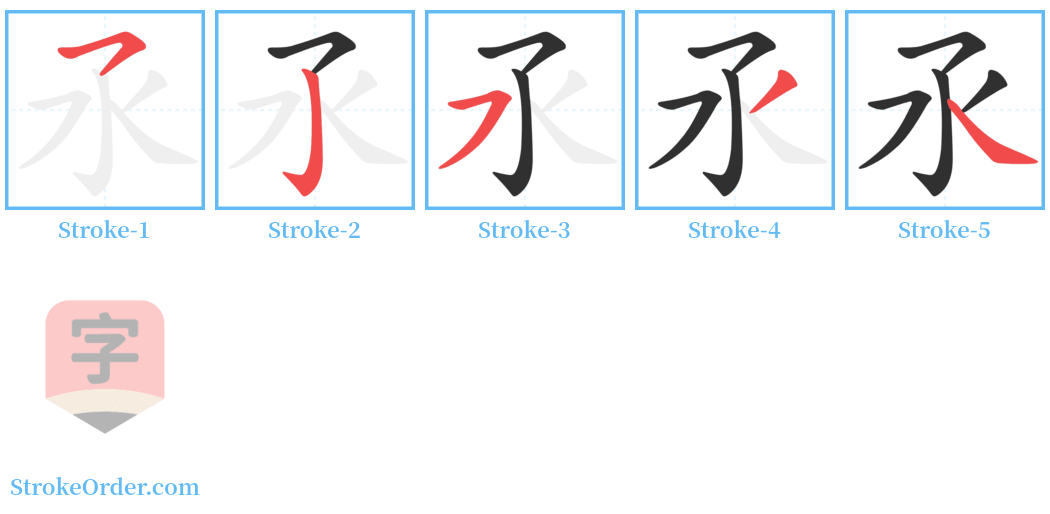氶 Stroke Order
Animated Stroke Order of 氶

Stroke Order Diagrams for 氶

Step-by-Step Handwriting Guide for 氶

Learn to Write Chinese Characters with Video Tutorials
Watch the video of writing the Chinese character "氶", learn the correct stroke order (笔顺) of the character "氶", and master the standard way of writing the character "氶".
Free Printable Handwriting Practice with Stroke Order: 氶
Printable Writing Practice Worksheet of "氶" in Portrait Orientation (Tian Zi Ge)

Printable Writing Practice Worksheet of "氶" in Landscape Orientation (Tian Zi Ge)

Information of 氶
Pinyin
zhěng、 chéng、 zhèng
Radical
水
Strokes
5 strokes
Usage
★★★
Definition
-
氶
1. Anciently the same as "拯" (to lift or support).
古同“拯”。
2. A river name (~水) originating from Shandong Province, China, flowing into the canal.
〔~水〕河名,源出中国山东省,流入运河。
3. An ancient county name, located in present-day Zaozhuang City, Shandong Province, China.
古县名,在今中国山东省枣庄市。
(Phonetic compound. From the hand, with "丞" (chéng) as the phonetic. Original meaning: to lift upwards.)
(形声。从手,丞(chéng)声。本义:向上举)
Same original meaning, as stated in the I Ching: "艮期腓,不拯其随." — "The feet do not rise." Wang Bi's annotation: "随 refers to toes. Stopping the ankle prevents the toes from lifting." Kong Yingda's commentary: "拯 means to lift."
同本义,艮期腓,不拯其随。——《易·艮》。王弼注:“随,谓趾也。止其腓,故其趾不拯也。”孔颖达疏:“拯,举也。”
4. Anciently the same as "承" (to carry or inherit).
古同“承”。
5. A surname.
姓。
(Associative meaning. The shape of oracle bone characters, with the upper part resembling a person kneeling and the lower part resembling two hands. Together indicating a person being supported or held up by both hands. Original meaning: to hold.)
(会意。甲骨文字形,上面象跽跪着的人,下面象两只手。合起来表示人被双手捧着或接着。本义:捧着)
To inherit: "The red brightness has not yet inherited the night." — "Chuci: Call of the Soul." Note: "To continue."
继承,朱明未承夜兮。——《楚辞·招魂》。注:“续也。”
6. [~乡] The name of a Han princely state in China.
〔~乡〕中国汉侯国名。